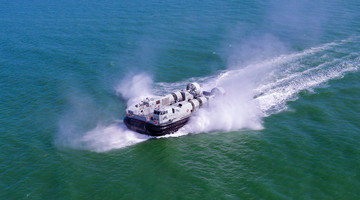
By Yang Min
The UN General Assembly recently adopted the US-submitted resolution on banning destructive direct-ascent anti-satellite (DA-ASAT) missile test, a commitment endorsed by nine countries including the UK, France, Japan and ROK in addition to the US. US Vice President Kamala Harris announced in April 2022 at Vandenberg Space Force Base in California that the US will ban direct-ascent anti-satellite missile tests. The White House also released a statement saying that banning the test should be a new international norm. In September, Harris said they will submit a motion on this topic to the US and called on other countries to make the same commitment.
DA-ASAT launch missiles from the ground or air to directly attack satellites or detonate them nearby. They, along with co-orbital ASAT and ground-based ASAT, are called kinetic energy destructive weapons that are aimed to cause irreversible destruction to space targets and demonstrate the user’s mighty strengths in space. Featuring a low threshold of use and flexibility in deployment, DA-ASAT weapons would generate tons of debris afterward that will affect the operation of other satellites.
As one of the first countries to carry out a DA-ASAT test with its relevant weapons being technologically most mature, the US possesses multiple types of weapon systems with DA-ASAT capability, including land-based anti-missile interceptor and ship-borne Standard Missile 3 (SM-3) interceptor. Against such a background, its proposal to ban the test is aimed at two things.
First, it wants to keep other countries from developing anti-satellite capabilities. Although the US is by far ahead of the pack in space capabilities, it still thinks some potential rivals’ development of ASAT has outpaced its own development of satellite defense capabilities. For instance, Russia had a successful DA-ASAT test last November that proved its anti-satellite capability, while India completed a similar test in March 2019. Washington thinks it necessary to curb their development in that domain.
Second, it wants to protect American satellites from space debris. The masses of space debris created by the use of DA-ASAT will threaten the safety of satellites and other space crafts. A space test conducted by the US in 2008 created over 100 pieces of fragments, and the one by Russia in November 2021 created about 1,500 pieces. The debris will pose a serious threat to the multitudes of satellites the US has launched into space.
America’s proposal to ban the DA-ASAT test indicated that the country has successfully developed and put into use this type of weapon, so it feels assured to call for peace now, said the head of Russian Federal Space Agency. It’s worth noting that America’s motion only concerns the test, but leaves out the deployment and use of relevant weapons, which lays bare its sinister intention.
In fact, it is when the US has already shifted the focus of its ASAT development to other aspects that it committed itself to banning the DA-ASAT test.
Last June, the US Space Command commander admitted for the first time that the US is developing directed energy anti-satellite systems to maintain its asymmetrical advantage in space. As a matter of fact, the country doubled the budget for developing this kind of weapon in the fiscal years from 2017 to 2019, with the US Army and Navy’s budget for that rising 23% and 28% respectively after the US Defense Strategy was released in 2018.
Directed energy anti-satellite system mainly refers to laser weapon systems and high-power microwave weapon systems, the former being able to blind satellites and the latter causing permanent damage to electronic circuits and processors by damaging the satellite-borne electronic systems. The US completed the laser anti-satellite test as early as the 1990s and proved laser weapons’ validity in attacking satellites.
Since then, the US has been focusing on developing small-sized, large-power solid laser weapons and fiber laser weapons. This year, the US Army successfully tested the 50kw-class and 300kw-class laser weapons at the directed energy system integration lab in Alabama, trying to use its technological expertise in tactical laser weapons to pave the way for developing anti-satellite laser weapons.
It’s clear that America’s commitment to stopping the DA-ASAT test is just a ploy to maintain its advantage and strength over potential rivals by preventing them from catching up.











